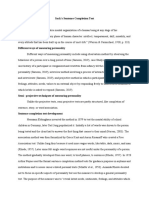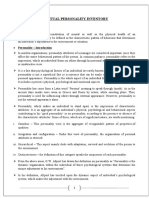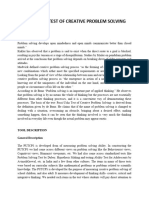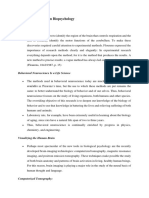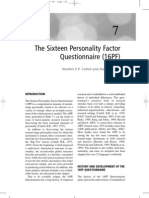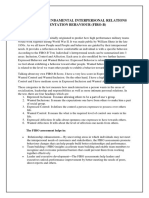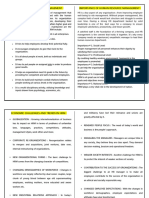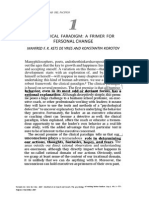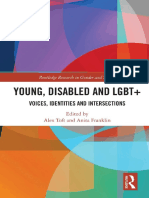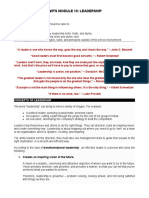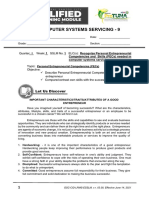100% found this document useful (1 vote)
1K views5 pagesFiro B
The document describes the Fundamental Interpersonal Relations Orientation–Behavior (FIRO-B) assessment. The FIRO-B measures a person's expressed and wanted behaviors in three dimensions: inclusion, control, and affection. It consists of 54 statements and takes 12-15 minutes to complete. Scores are interpreted individually for the six subscales and combined for total needs and behaviors. The document provides an example individual report, showing the subject's scores and interpretation indicating medium-high social interaction and differing needs for inclusion, control, and affection.
Uploaded by
Paramesh WaranCopyright
© © All Rights Reserved
We take content rights seriously. If you suspect this is your content, claim it here.
Available Formats
Download as DOCX, PDF, TXT or read online on Scribd
100% found this document useful (1 vote)
1K views5 pagesFiro B
The document describes the Fundamental Interpersonal Relations Orientation–Behavior (FIRO-B) assessment. The FIRO-B measures a person's expressed and wanted behaviors in three dimensions: inclusion, control, and affection. It consists of 54 statements and takes 12-15 minutes to complete. Scores are interpreted individually for the six subscales and combined for total needs and behaviors. The document provides an example individual report, showing the subject's scores and interpretation indicating medium-high social interaction and differing needs for inclusion, control, and affection.
Uploaded by
Paramesh WaranCopyright
© © All Rights Reserved
We take content rights seriously. If you suspect this is your content, claim it here.
Available Formats
Download as DOCX, PDF, TXT or read online on Scribd
/ 5










